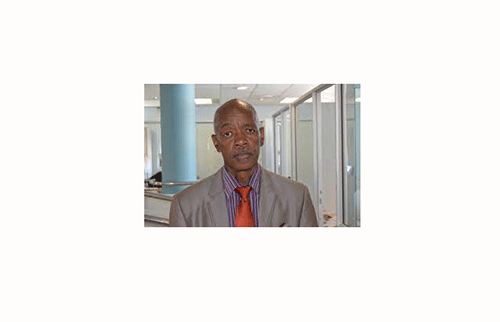In 1903, the Pan African scholar, William EB Du Bois prophetically remarked: “The problem of the twentieth century is the problem of the colour line.”
I submit in this open letter that one of the major problems, certainly not the only one, in post-independent Namibia, is the problem of ethnic polarisation.
Please note that I never use the word tribe or tribalism in my writings. The word tribe, and by extension tribalism, is a derogatory colonial construct that denotes backwardness and that is why I never use it.
Over the last two weeks or so, there were four major issues that hit the news headlines and which have, in one way or another, a bearing on our social cohesion as a nation. The first one was the National Petroleum Corporation of Namibia (Namcor) saga, the second one was the anti-Damara remarks made by a Ministry of Justice official, the third one was the Namibia University of Science and Technology (NUST) infightings where ethnic rivalry reared its ugly head, and the fourth one was the National Assembly debate on the 1904 Genocide Memorial Museum.
These examples of four major events taking place within a span of two weeks, are a clear testimony of what I am talking
about. I am, figuratively speaking, shouting from the rooftops saying: we have a problem; and that problem is ethnic polarisation.
Let me briefly try to unpack these events one by one in that chronological order. Anyone who has been around long enough would agree with me that, looking at the surnames of the two individuals who were mainly at loggerheads at Namcor, the fall-out does not only have a board-management dimension or gender dimension only (as some of the commentators have pointed out) but it also has a racial/ethnic dimension; much as we do not want to publically say so.
The anti-Damara remarks that were uttered by a senior Ministry of Justice official do not need any explanation regarding their ethnic prejudice. In the same way, the NUST infightings have all the hallmarks of ethnic rivalry and no further explanation is needed. Regarding the National Assembly debate on the 1904 Genocide Memorial Museum, one MP stood up to say that the museum should not only be in the memory of Ovaherero and Nama victims, but it should honour all Namibians.
Obviously, such a remark has a strong ethnic undertone, because the whole genocide debate has, in any case, been steeped in ethnic emotionalism.
I am not implying that what was said was wrong or correct, in terms of value judgement. As a national social cohesion activist, it is not my space to publically express any opinion on such a sensitive matter, safe to say that the statement has ethnic undertones.
Regarding the anti-Damara remarks by the lawyer, let us remember that words are, for the most part, value-laden. If you use certain words, long enough, to drive a narrative that paints a negative image about a certain ethnic group, then in the end that narrative would gain currency in certain circles.
Again, as a national social cohesion activist, I cannot afford to jump on the bandwagon of those who are calling for the head of the young lady who uttered the anti-Damara sentiments; that will not help matters.
A while ago, the Nigerian novelist, Chimamanda Ngozi Adichie (2014) gave a public lecture on the danger of a single story. A negative single story, in sociocultural context, is when we have a one-sided negative opinion about another ethnic or racial group, for example, based on our own subjective deductive reasoning. As a result, we tend to define that group in the context of “us” as the “good insiders” and “them” as the “bad outsiders”. As Paulo Freire (1993) remarked ‘’… often we close ourselves into circles of certainty from which we cannot escape; and we create our own truth. We consider anything that is not our truth a lie; and in the end reality is imprisoned.”
If the four examples cited above are anything to go by, then it is clear that 33 years into our independence, Namibia is still overshadowed by division and disunity. Our recent history under apartheid colonial rule serves as a crude reminder of the pain and division that can arise when we focus on our differences.
Namibia’s diverse cultural landscape presents a rare opportunity to revel in the unity within our diversity and to foster cultural interconnectedness.
When we start to engage in conversations that foster dialogue and collaboration, we can eventually dissolve barriers and forge enduring cultural interconnectedness.
The Turquoise Harmony Institute in South Africa has been organising events for many years to bring South Africans from different religious backgrounds together, to foster dialogue and to build bridges of understanding. It is high time we undertook such an initiative in Namibia at civil society level, over and above the government’s My Namibia, My Country, My Pride Campaign.
Namibia’s intricate mosaic of cultures and languages is a confluence that should invite us to transcend the boundaries of differences so as to weave our common threads into a national identity tapestry.
The role of a national social cohesion advocate, which I have been trying to be through my writings, is not to choose sides, but to rather raise a red flag on issues that can cause divisions; while celebrating milestones that can unite us.



